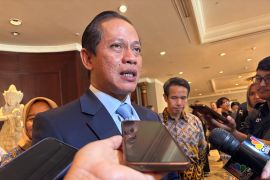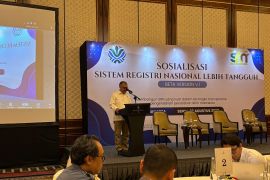For example in 2007, drought-induced anthrax impacted Grevy`s zebra in the Samburu National Park."Nakuru (ANTARA News) - Wildlife is still one of the core economic pillars to Kenyas economy.
But impacts of climate change threat existence of this resource exposing the East African nation to economic vulnerabilities, experts say.
Aden Duale, Leader of Majority in the National Assembly, in his submission to Parliament on Dec. 1, to drum support for approval of ratification of the Paris Climate Change Agreement, said Kenya is vulnerable to the impacts of climate change as it is exhibited by the countrys high dependency on climate sensitive sectors like wildlife, tourism, agriculture, energy, water and health.
The lawmakers did approve it, giving way to implementation of actions and strategies for mitigation and adaptation to climatic changes in the country.
Julius Kamau, executive director of the East African Wild Life Society (EAWLS) said there is already clear evidence that wildlife and habitats across Kenya are already feeling the impacts of climate change.
"For instance there have been massive deaths of flamingos in Lake Nakuru (National Park)," Kamau told Xinhua on Saturday. Lake Nakuru National Park is one of the two premium parks in Kenya and its the sanctuary for rhino.
Kamau says climate change has caused changes to the wildlife habitats in different parts of the country, causing a disruption to their normal living.
"For most species, the habitat becomes less suitable with the uneven precipitation, higher temperatures, drying in wetland and the rising of the sea level," said the EAWLS executive director.
Health and survival of wildlife populations is intricately linked to the state of ecosystems and habitats that sustain them, he said. And therefore, any slight alteration of habitats and ecosystem directly affect their behavior and survival, Xinhua reported.
Kamau emphasizes that threats of climate change are very dangerous to survival of wildlife since they cause a reduction of their population through diverse ways.
Climate change results to increased incidents of human-wildlife conflicts, endangering lives of animals, he said.
"For example, according to Kenya Wildlife Service (KWS), drought has pushed lions closer to waterholes bordering human settlement increasing the probability of conflicts," Kamau said.
"There is increased competition between humans and wildlife over diminishing resources that is water and food. Carnivores have been witnessed to kill livestock and feed on the intestinal matter not only for food but also for water. As a result humans also kill wildlife for food and as a retaliatory mission," he added.
Equally prolonged droughts causes direct wildlife deaths resulting from reduced water volumes and forage to feed on such has been a cause of deaths to flamingos at Lake Nakuru National Park, he says.
Also, changes to temperatures have contributed to increased spread and reemergence of wildlife diseases, he said.
"For example in 2007, drought-induced anthrax impacted Grevys zebra in the Samburu National Park," said Kamau.
He said experts predict that one fourth of wildlife in Kenya will be driven to extinction by 2050 if the warming trends continues at the current rate.
"For example, according to the Kenya Wildlife Service, there are less than 2,000 African lions in Kenya and it is predicted that lion may be extinct in the next 20 years if no urgent action is taken to address the threats," he said.
To promote wildlife resilience, Kamau noted the importance of building knowledge among communities on how to adapt to climate change in order to relieve pressure on wildlife dependent ecosystem.
According to Kamau, the EAWLS has helped communities in Kajiado, in Rift Valley region and Kwale in coastal region to shift to alternative sources of livelihoods to curb destruction of forests and water catchments, directly linked to survival of wildlife.
He said most impacts of climate change on wildlife are human-induced and therefore should be mitigated indirectly through implementation of community-based initiatives.
He said communities can be assisted to embrace poultry farming and bee keeping as sources of livelihood instead of depending on forests for charcoal.
On solving human-wildlife conflict, he said communities can be assisted to adopt good agricultural practices and clean energy to improve their livelihoods.
This will provide communities inhabiting the hotspots of human-wildlife conflicts with various deterrents of carnivore predation on their livestock, thereby bringing forth harmonious coexistence.
Among the commitments Kenya has made in 2015 Intended Nationally Determined Contributions (INDCs) is to reduce carbon emissions by 30 percent by 2030. Realization of the target would be beneficial to all sectors of economy, wildlife phenomenally crucial.
Reporter: Robert Manyara
Editor: Priyambodo RH
Copyright © ANTARA 2016












